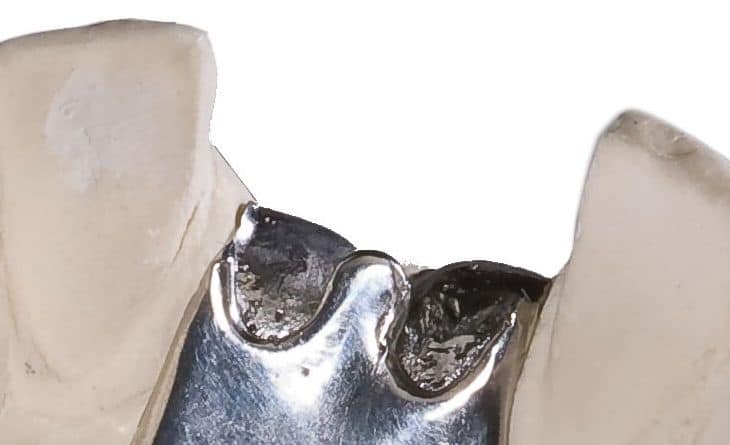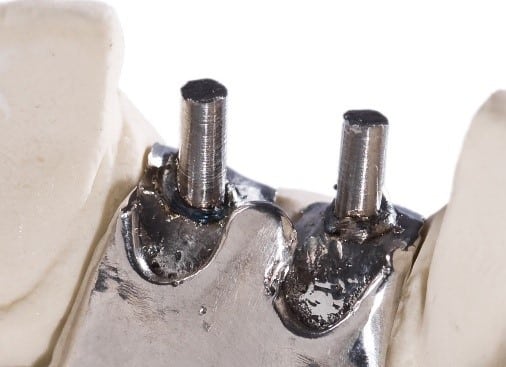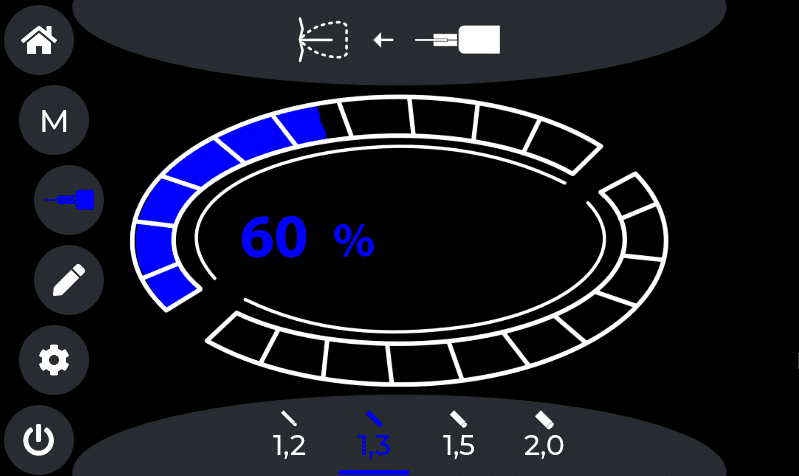Retention welding function -
a special function of the PUK D6
Most dental technicians are familiar with the initial situation: a broken acrylic saddle or broken acrylic teeth, often in the anterior region, where a retention was too weak or not placed at all.
In the past, various time-consuming work steps had to be carried out for this type of repair, depending on the situation (remove remaining acrylic parts, produce a bent retention, solder on, reattach complete acrylic parts, grinding-in, etc.).
A special function of the PUK D6 – the retention welding function – offers a simple and quick way of attaching retentions to a cast partial cobalt-chromium denture, stable and without generating heat.



The standard scope of delivery of the PUK D6 includes a corresponding set containing adapters for different pin diameters (Ø 1.2, 1.3, 1.5 and 2 mm). You can watch the procedure for replacing the regular tungsten electrode with the so-called pin welding adapter in the following video.
Video: Inserting the pin welding adapter
You can have a look at the procedure for replacing the tungsten electrode with the pin welding adapter here.
The process when using the retention welding mode differs from classic TIG welding with the PUK D6, in which the electrode retracts a small distance into the handpiece for a brief moment and simultaneously sets a welding spot by releasing the welding current.
In the operating level for this function, there is a selection option for the respective diameters with the recommendation for appropriate parameters that can be individually adjusted at any time.
The retention pin (e.g. made of a cobalt-based alloy) that is inserted into the handpiece must first be briefly contacted. It is immediately pulled back a little bit by the handpiece lifting magnet and held in this position.
The retention pin must now be touched lightly a second time within 3 seconds. The pin is released by the solenoid and plunges into the workpiece surface during the welding process.
A loud noise accompanies this process and provides acoustic feedback for a stable connection. If the process is silent (e.g. due to a contact being made too strongly or too late), it is highly likely that only a weak connection has been achieved – this is not a malfunction, the process can simply be carried out again.
The following video shows the welding of a retention pin as outlined above.

Video: Renewing/attaching an anterior retention
to a cast partial cobalt chromium denture
You can watch the procedure for welding a retention pin to a cast partial denture in this application video.
